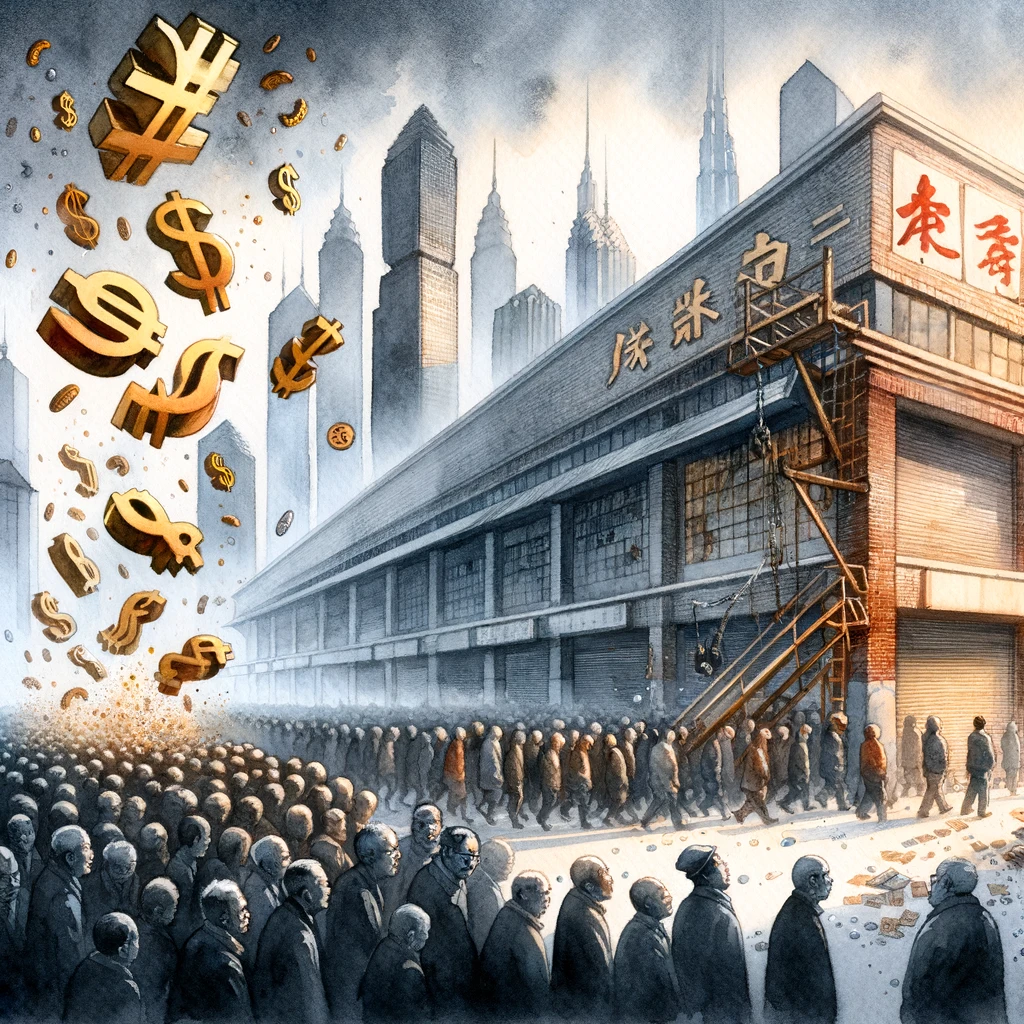The 2008 Global Financial Crisis stands as one of the most significant economic downturns in modern history. Its effects were felt worldwide, leading to profound changes in economic policies and financial regulations. This article explores the causes, impacts, and responses to the crisis, providing insights into its long-term implications and lessons for the future.

Causes and Precursors
Housing Bubble and Subprime Mortgage Crisis
In the early 2000s, the United States experienced a housing boom fueled by low interest rates, easy access to credit, and strong demand for real estate. Banks and financial institutions aggressively promoted homeownership, often extending mortgages to borrowers with poor credit histories. These high-risk loans, known as subprime mortgages, were given without thorough checks on borrowers’ ability to repay.
The widespread issuance of subprime mortgages led to an unsustainable housing bubble. As home prices soared, more people took on loans they couldn’t afford, believing that property values would continue to rise. When the bubble burst in 2007, housing prices plummeted, and millions of borrowers defaulted on their loans. This triggered a wave of foreclosures and significant losses for lenders and investors holding mortgage-backed securities.
Financial Deregulation and Risky Financial Products
In the years leading up to the crisis, financial deregulation allowed for greater risk-taking by banks and other financial institutions. The repeal of the Glass-Steagall Act in 1999, which had previously separated commercial banking from investment banking, enabled banks to engage in more speculative activities.
Financial institutions created complex financial products, such as mortgage-backed securities (MBS) and collateralized debt obligations (CDOs), which pooled and repackaged subprime mortgages into securities sold to investors. These products were poorly understood and often mispriced, spreading risk throughout the financial system. The lack of transparency and oversight allowed these risky assets to proliferate, setting the stage for a widespread financial meltdown.
Global Imbalances and Interconnected Economies
Global economic imbalances also played a crucial role in the crisis. Countries like China and Germany had large trade surpluses and accumulated significant foreign reserves, while the United States and other nations ran large trade deficits and borrowed extensively. The surplus countries invested heavily in U.S. financial assets, contributing to low interest rates and easy credit conditions that fueled the housing bubble.
The interconnectedness of global financial markets meant that problems in one part of the world quickly spread to others. When the U.S. housing market collapsed, financial institutions worldwide faced huge losses, leading to a credit crunch and a severe downturn in global economic activity.
Consequences for the Global Economy

Recession and High Unemployment
The crisis led to a global recession, the most severe since the Great Depression of the 1930s. In the United States, GDP contracted by 4.3% from the peak in 2007 to the trough in 2009. Unemployment soared, peaking at 10% in October 2009, leaving millions of people out of work and struggling to make ends meet.
The economic downturn was not limited to the United States. European economies also faced severe recessions, with countries like Greece, Spain, and Ireland experiencing deep economic contractions and high unemployment rates. The crisis led to a significant loss of income and wealth for individuals and businesses around the world.
Collapse of Financial Institutions and Bailouts
Several major financial institutions either failed or required substantial government bailouts to survive. Lehman Brothers, one of the largest investment banks in the U.S., declared bankruptcy in September 2008, marking one of the most dramatic events of the crisis. Other institutions, including AIG, Bear Stearns, and Merrill Lynch, faced severe financial distress and were either bailed out by the government or acquired by other banks.
Governments around the world intervened with massive bailout packages to stabilize the financial system. The U.S. government, for example, implemented the Troubled Asset Relief Program (TARP), which allocated $700 billion to purchase toxic assets and provide capital to struggling banks. Similar measures were taken in Europe and other regions to prevent the collapse of the financial system.

Long-term Effects on Global Trade and Growth
The crisis had long-lasting effects on global trade and economic growth. World trade volumes declined by more than 10% in 2009, as demand for goods and services fell sharply. Many countries experienced significant slowdowns in economic growth, and the recovery was slow and uneven.
The crisis also led to a reassessment of the global economic order and highlighted the vulnerabilities of interconnected financial markets. The shift towards more conservative financial practices and increased regulation had lasting impacts on economic policies and growth strategies worldwide.
Policy Responses and Reforms
Stimulus Packages and Monetary Easing
In response to the crisis, governments and central banks implemented large-scale fiscal stimulus packages to boost economic activity and support recovery. In the U.S., the American Recovery and Reinvestment Act of 2009 provided $831 billion in spending and tax cuts to stimulate the economy. Similar measures were taken in Europe, China, and other regions to support growth and prevent further economic decline.
Central banks, including the Federal Reserve, the European Central Bank, and the Bank of England, adopted aggressive monetary easing policies. They lowered interest rates to near zero and implemented quantitative easing programs to inject liquidity into the financial system and encourage lending and investment.
Financial Regulations (Dodd-Frank Act, Basel III)
The crisis prompted significant regulatory reforms to strengthen the stability of the financial system. In the U.S., the Dodd-Frank Wall Street Reform and Consumer Protection Act of 2010 introduced comprehensive changes to financial regulation, including the establishment of the Consumer Financial Protection Bureau, enhanced oversight of financial institutions, and restrictions on proprietary trading by banks.
Internationally, the Basel III framework was introduced to increase the resilience of banks by requiring higher capital and liquidity standards. These reforms aimed to reduce the risk of future financial crises by improving the oversight and risk management practices of financial institutions.
International Cooperation (G20 Initiatives)
The crisis underscored the need for greater international cooperation in addressing global economic challenges. The G20, which includes major advanced and emerging economies, played a crucial role in coordinating responses to the crisis. The G20 summits in 2008 and 2009 led to agreements on stimulus measures, financial regulation, and reforms to strengthen the global financial system.
The crisis also highlighted the importance of multilateral institutions, such as the International Monetary Fund (IMF) and the World Bank, in providing financial support and policy guidance to countries in crisis. These institutions worked with national governments to stabilize economies and promote recovery.
Impact on Developing Economies
Spillover Effects and Financial Contagion
The 2008 crisis had significant spillover effects on developing economies, many of which were not directly involved in the subprime mortgage market but were affected by the global downturn. The crisis led to a sharp decline in global demand for exports, lower commodity prices, and reduced capital flows to developing countries.
Financial contagion also spread to emerging markets, leading to currency depreciations, stock market declines, and capital outflows. Countries that were heavily reliant on foreign investment and exports faced severe economic challenges as the crisis unfolded.
Changes in Foreign Investment and Aid Flows
The crisis led to a reduction in foreign direct investment (FDI) and international aid flows to developing countries. Investors became more risk-averse, leading to lower investment in emerging markets and a slowdown in economic development. Many developing countries experienced a decline in remittances, which are a vital source of income for millions of people.
Aid flows also decreased as donor countries faced budget constraints and prioritized domestic economic recovery. The reduction in external financing compounded the challenges faced by developing countries, hindering their ability to address poverty and promote economic growth.
Responses from Emerging Market Economies
Despite the challenges, many emerging market economies implemented effective responses to the crisis. Countries like China and India introduced stimulus measures to support domestic demand and maintain economic growth. China, for example, launched a $586 billion stimulus package focused on infrastructure investment and social programs.
These measures helped mitigate the impact of the crisis and contributed to a faster recovery in some emerging markets. The crisis also prompted developing countries to strengthen their financial systems, improve regulatory frameworks, and diversify their economies to reduce vulnerability to external shocks.
Long-Term Implications and Future Challenges
Shift Towards More Regulated Financial Systems
The 2008 crisis led to a shift towards more regulated financial systems, with a greater emphasis on risk management and oversight. Regulatory reforms aim to prevent excessive risk-taking and improve the stability of financial institutions. This shift has had a lasting impact on the financial industry, promoting a more cautious approach to lending and investment.
The increased regulation has also led to changes in the structure of financial markets, with a focus on transparency, accountability, and resilience. These changes are designed to reduce the likelihood of future crises and ensure the stability of the global financial system.
Rising Populism and Changes in Economic Policy
The economic and social impacts of the crisis contributed to a rise in populism and changes in economic policy in many countries. The crisis highlighted the inequalities and vulnerabilities in the global economic system, leading to increased public discontent and demands for greater economic justice and protectionism.
In response, some governments adopted more nationalist and protectionist policies, focusing on domestic economic interests and reducing reliance on global trade. This shift has implications for international economic relations and the future of globalization.
Preparing for Future Global Economic Shocks
Policymakers have emphasized the need for robust economic policies, effective financial regulation, and international cooperation to manage economic risks and promote stability.
Future challenges include addressing the vulnerabilities in the global financial system, managing the impact of technological change, and ensuring that economic growth is inclusive and sustainable. By learning from the 2008 crisis, countries can better prepare for and mitigate the impacts of future economic disruptions.
Data Reference Points:
- U.S. GDP Contraction: U.S. GDP contracted by 4.3% from the peak in 2007 to the trough in 2009.
- Unemployment Rate: U.S. unemployment peaked at 10% in October 2009.
- TARP: The U.S. government allocated $700 billion for the Troubled Asset Relief Program (TARP).

